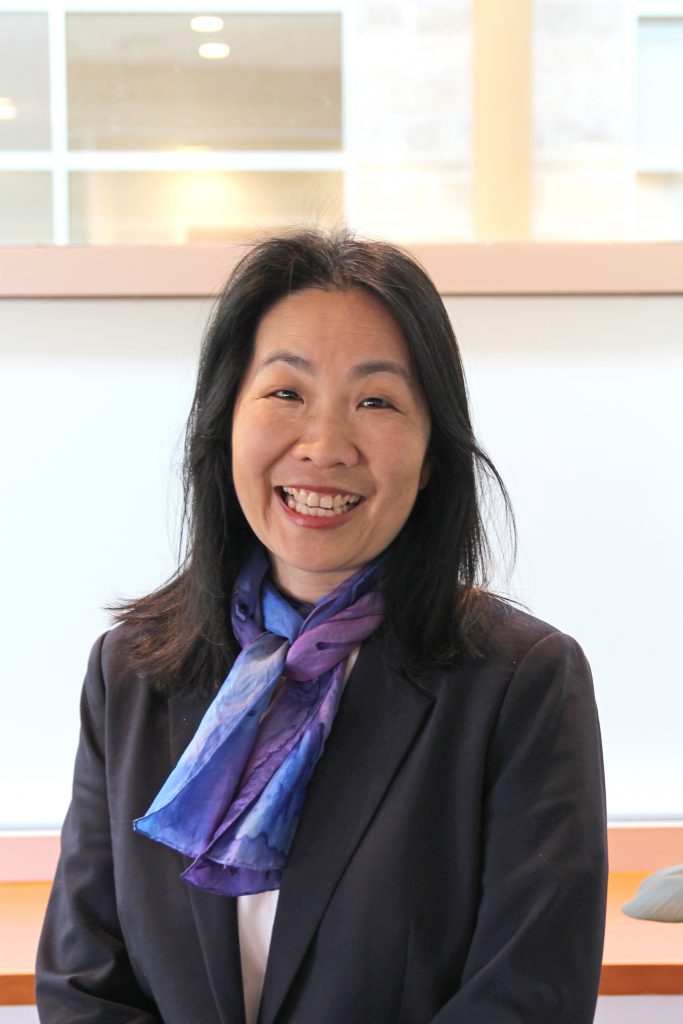Women in Academia: Dr. Chiachen Cheng
by Communications and Engagement
 Dr. Chiachen Cheng.
Dr. Chiachen Cheng.Women physicians are an integral part of the health care team at Thunder Bay Regional Health Sciences Centre (TBRHSC). Each month, we will highlight some of the exceptional women physicians and surgeons who provide clinical care, education and leadership within our Hospital and beyond. A special ‘thank you’ to all of the women physicians who agreed to be interviewed.
Meet Dr. Chiachen Cheng
Specialty: Child and Adolescent Psychiatry
Residency: McMaster University
Fellowship: McMaster University
Research Fellowship: Centre for Addiction and Mental Health (CAMH)
What is one thing that you love about practicing in Thunder Bay?
The lifestyle. We have busy work lives but being able to attend all of the kid’s activities is really important to me. In terms of work, because the region is hugely underserviced, you can make a bigger difference in research and clinically than you could in other places. We provide quality, evidenced based care that you can get in tertiary centres. I’m proud of the work we do here.
What does it mean to be a woman physician at TBRHSC?
Sometimes I forget that I’m a woman physician. I have experienced barriers, and there aren’t a lot of people like me who work here. But, I’ve never looked for people who are the same as me, rather I’ve found mentors and allies of all shapes and sizes in Thunder Bay.
What is your vision for psychiatry in Thunder Bay?
Psychiatry services are provided at two sites, TBRHSC and St. Joseph’s Care Group. I would love to see the two sites as equal and collegial partners with fewer silos and more integration with community partners. I’ve worked in community child and adolescent psychiatry for years and understand both community and hospital-based care. We need to shift the perception of TBRHSC as a place to house kids that can’t be managed in the community to a place where we provide acute inpatient care – the acuity is important. I would love to grow the next generation of psychiatrists to be comfortable with the high acuity we see in Thunder Bay by offering electives and placements to psychiatry residents from outside NOSM University.
If you had one superpower, what would it be?
I want everyone to see that there are other forms of leadership than named and titled positions.
How could TBRHSC better support women physicians?
Four things: 1. Have an on-site day care. 2. Stop having meetings at kid drop off times. 3. Provide support with administrative task because women bear the brunt of these responsibilities in addition to clinical work. 4. Know what you love to do in work and in life. Do those things and hire someone else to do the rest.
What does it mean to be a woman physician leader at TBRHSC?
There needs to be more of us. It is hard to rise to through the ranks of physician leaders when all prior chiefs of staff and heads of department have been men. We need diversity in leadership but we also need to be careful of tokenism.
We need to build a network of people within the hospital to mentor and support women physician leaders. External executive coaches would also support the development of women physician leaders. I attended a one-week women’s leadership retreat called “Momentum” – it was the best experience. Aspiring women physicians should have opportunities to attend similar leadership development events. The last thing is conflict resolution. We need to learn about conflict resolution without amygdala hijacking.
Is there anything else you’d like to share?
I’m grateful for opportunity to talk about the role of women physicians.